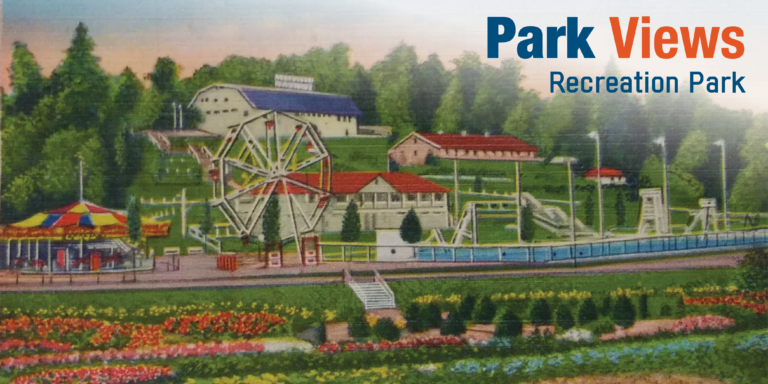This entry is part of Park Views, an Asheville Parks & Recreation series that explores the history of the city’s public parks and community centers – and the mountain spirit that helped make them the unique spaces they are today. Read more from the series and follow APR on Facebook and Instagram for additional photos, upcoming events, and opportunities.
When Recreation Park opened, it embodied a new era of American parks. Rather than simply embrace nature or serve as community gathering spots, these parks acted as recreation facilities with an emphasis on activities.
Over the following decades, “Asheville’s Playground” featured motorboating and rowing on Lake Craig, a zoo, skating rink, swimming pool, merry-go-round, miniature train, carnival rides, pavilion for square dancing and galas, and much more. The park currently contains few vestiges of its extensive amusements of the 20th century, but serves as an important link in a larger public recreation complex that includes Azalea Park, John B. Lewis Soccer Complex, Western North Carolina Nature Center, and Asheville Municipal Golf Course.
Asheville Tourist Camp
By the 1920s, the rise of personal automobiles among the middle class led to the creation of tourist camps, an affordable accommodation for families and individuals who needed a temporary place of lodging on their road trip to a final vacation destination. As the name implies, early tourist camps were little more than campgrounds where tourists could pitch tents or park their cars to sleep in. These camps usually provided toilets and bathing facilities – and, sometimes, recreational opportunities.
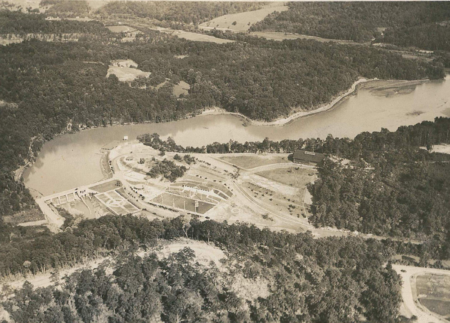 Asheville’s first tourist camp was established by city government in 1921 on a site that originally served as a training camp for civilian women who worked for the Army during World War I, a forerunner of the Women’s Army Corps. Asheville Board of Trade (now known as Asheville Chamber of Commerce) built a swimming pool and mess hall while at least 50 tents were erected to accommodate women attending the training camp.
Asheville’s first tourist camp was established by city government in 1921 on a site that originally served as a training camp for civilian women who worked for the Army during World War I, a forerunner of the Women’s Army Corps. Asheville Board of Trade (now known as Asheville Chamber of Commerce) built a swimming pool and mess hall while at least 50 tents were erected to accommodate women attending the training camp.
In 1922, the City of Asheville installed a dance floor and converted the former mess hall into a skating rink for enjoyment by both locals and tourists at Asheville Tourist Camp, the area that eventually became Recreation Park. Events hosted that summer and fall included a swimming gala with an “exhibit of fancy diving” and a Labor Day dance.
In February 1924, Asheville City Commission suggested construction of a concrete bridge and dam over the Swannanoa River at the tourist camp to replace a wooden bridge. The wooden bridge was constructed in 1887 to access the city’s municipal waterworks which closed around 1915 and sustained considerable damage in the Flood of 1916. The new dam was used to supply hydroelectric power to Asheville Tourist Camp and created the 56-acre Lake Craig, a major attraction at the park named for Asheville resident and former North Carolina Governor Locke Craig.
The park catered more directly to city residents by this time and became known exclusively as Recreation Park in 1925. The tourist camp shuttered the next year and that area became picnic grounds.
‘Asheville’s Playground’ and the Other Recreation Park
In 1925, the city parks commission added a shooting range, Ferris wheel, merry-go-round, dance pavilion, tennis courts, playground, and wading pool. A municipal zoo also opened in the park with snakes, a groundhog, gophers, rabbits, and other animals. Betsy the Elephant joined the zoo around 1926, attracting many visitors until she was sold in 1943 when the park shut down during World War II.
Olympic swimmer Eleanor Coleman was hired in 1926 to operate a new pool that pumped in water from the Swannanoa River. A two-story bathhouse was also constructed using material from the recently-demolished 1892 Asheville City Hall building.
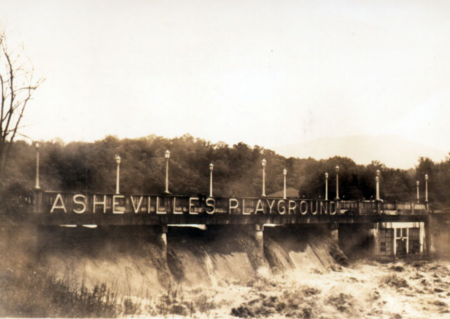 Recreation Park adopted the slogan “Asheville’s Playground,” but in an era of government-mandated segregation, it was a whites-only facility even though it was funded by all taxpayers. A swimming pool for Black community members next to Mountain Street School opened around 1916, but the city’s public parks were primarily off limits to Black families. In 1928, Asheville Parks Commission announced Black residents could visit the zoo on Thursday afternoons, but the rest of Recreation Park remained off limits.
Recreation Park adopted the slogan “Asheville’s Playground,” but in an era of government-mandated segregation, it was a whites-only facility even though it was funded by all taxpayers. A swimming pool for Black community members next to Mountain Street School opened around 1916, but the city’s public parks were primarily off limits to Black families. In 1928, Asheville Parks Commission announced Black residents could visit the zoo on Thursday afternoons, but the rest of Recreation Park remained off limits.
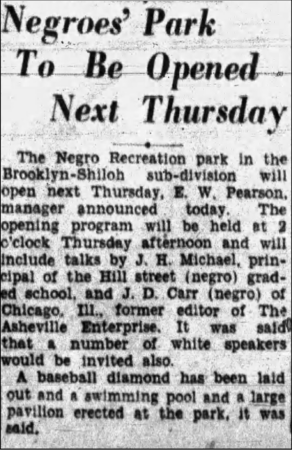 In 1932, E.W. Pearson and Buncombe County District Agricultural Fair Association opened a park for Black people in the Shiloh community using private contributions. Also called Recreation Park, it featured a baseball field, swimming pool, and large pavilion.
In 1932, E.W. Pearson and Buncombe County District Agricultural Fair Association opened a park for Black people in the Shiloh community using private contributions. Also called Recreation Park, it featured a baseball field, swimming pool, and large pavilion.
Construction on a second municipal pool for white residents in Malvern Hills Park began in 1934 using public funds. City Council eventually funded building a public pool in Walton Street Park for the city’s sizable Black population in 1947. Like the Malvern Hills neighborhood, Black community members were specifically barred from owning land in the Beverly Hills neighborhood adjacent to Recreation Park until 1948 when the U.S. Supreme Court struck down the ability to use this method of segregation.
The park remained a popular destination throughout the Great Depression, adding pony rides and additional amusements and hosting swim meets and dances. Federal New Deal funds were used to rebuild the skating rink, move the concessions stand, and construct barracks for workers (the park generally operated on a May-September schedule). Four outdoor bowling lanes opened near the swimming pool in 1940.
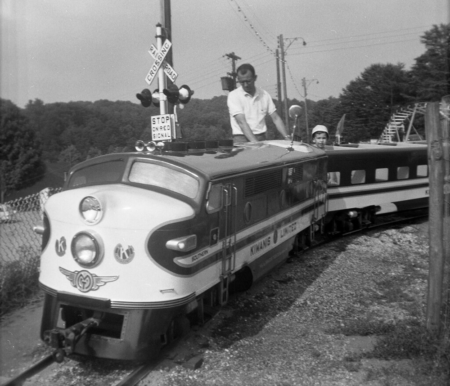 Following the end of World War II, the park was extensively renovated with a new pool, skating rink, and rides. Recreation Park remained a popular location for city-wide events such as Aquaganza, a 1942 fundraiser that featured 100 dancers, singers, swimmers, and divers and an outdoor amphitheater that seated 2,000 people. A fire destroyed the second story of the bathhouse in 1948.
Following the end of World War II, the park was extensively renovated with a new pool, skating rink, and rides. Recreation Park remained a popular location for city-wide events such as Aquaganza, a 1942 fundraiser that featured 100 dancers, singers, swimmers, and divers and an outdoor amphitheater that seated 2,000 people. A fire destroyed the second story of the bathhouse in 1948.
The 1950s saw new tables and outdoor firepits, the Science Circus Arena for physics-fueled “magic shows,” and a miniature passenger train donated by the Kiwanis Club that featured a tunnel and open-top cars. Henrietta the Elephant joined the zoo in 1959 as more than 1,000 people per week flocked to see exotic animals such as Central American birds and reptiles, lions, zebras, and monkeys.
Asheville’s Playground for All, Eventually
As maintenance and improvement of Walton Street Park lagged behind other public spaces, local Black activists requested the city make segregated facilities available to all residents. Citing ground-breaking examples of Asheville Municipal Golf Course and the Recreation Park zoo being made available to Black 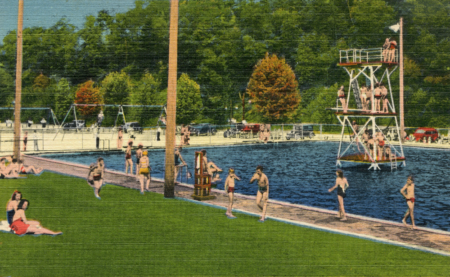 community members during certain times each week, attorney Harold T. Epps and Rev. L.A. Brown in 1954 petitioned City Council to open various recreation facilities in the city to all residents, including pools in Malvern Hills and Recreation parks. Council responded that a decision should be postponed until the Supreme Court ruled on Brown v. Board of Education later that year.
community members during certain times each week, attorney Harold T. Epps and Rev. L.A. Brown in 1954 petitioned City Council to open various recreation facilities in the city to all residents, including pools in Malvern Hills and Recreation parks. Council responded that a decision should be postponed until the Supreme Court ruled on Brown v. Board of Education later that year.
However, city government did not immediately integrate its public pools after the Supreme Court decisions on Brown vs. Board of Education and related rulings were made in 1954 and 1955. Recreation Park’s pool was closed and filled with dirt in 1956, which Asheville Citizen-Times reported as “a step taken to avoid any possible racial clash.” The next year, the pool and bathhouse was sold to the Asheville Jaycees. They repaired the pool and reopened it as a membership club. Since the Jaycees were not a public entity, they were not required to comply with the Supreme Court order to open facilities to all community members.
Throughout this time, separate fireworks displays were held at Recreation and Walton Street parks each Independence Day. The 1968 presentation was described as “a rocket and bombshell fireworks display lasting about 45 minutes” with a shorter display scheduled at the same time at Walton Street Park.
Attempts at integration of Recreation Park’s pool continued through the 1960s including a July 1964 effort by members of Congress of Racial Equality. Public facilities integrated in 1962 by fiat of the City Manager and Asheville Parks & Recreation (APR) opened a new Olympic-size swimming pool in the park in 1970 available to all residents followed by construction of a new bathhouse in 1974.
More Than Just a Pool
While the zoo remained open all year, the rest of the park’s attractions only operated seasonally from late spring to early fall. The roller skating rink was converted to an ice skating rink in 1964 to extend operations throughout the year. However, it was destroyed along with several rides and three buildings when suspected arsonists set fires in 1966.
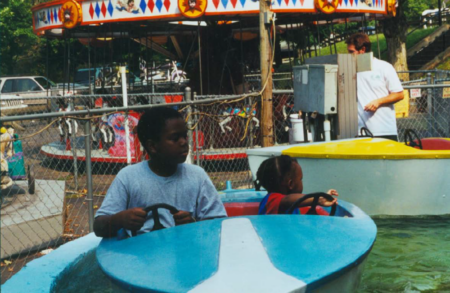 The fires led to more renovations including a new loop road around the park’s amusements, new bumper car building, pirate ship-styled fun house, penny arcade, and design continuity between new and old buildings. Among the park’s featured rides, visitors also enjoyed a tilt-a-whirl and small roller coaster installed by Biltmore Lions Club.
The fires led to more renovations including a new loop road around the park’s amusements, new bumper car building, pirate ship-styled fun house, penny arcade, and design continuity between new and old buildings. Among the park’s featured rides, visitors also enjoyed a tilt-a-whirl and small roller coaster installed by Biltmore Lions Club.
The zoo came under fire for its small cages with low ceilings and overall treatment of the animals in the 1970s. The U.S. Department of Agriculture recommended its closure in 1973, resulting in public calls to completely overhaul and modernize its operation. In response, Junior League of Asheville launched a campaign for a new children’s zoo and nature center with a $25,000 donation.
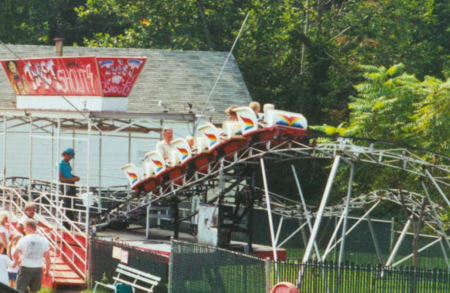 The Nature Society (now known as Friends of WNC Nature Center) formed in 1975 to educate the public about natural history and ecology of the Southern Appalachians, pioneering the concept of zoos focused on native species. The revamped and expanded nature center opened in 1977 as Buncombe County entered into a 24-year lease agreement on the property, making it a separate entity from Recreation Park.
The Nature Society (now known as Friends of WNC Nature Center) formed in 1975 to educate the public about natural history and ecology of the Southern Appalachians, pioneering the concept of zoos focused on native species. The revamped and expanded nature center opened in 1977 as Buncombe County entered into a 24-year lease agreement on the property, making it a separate entity from Recreation Park.
Saddled with a long list of deferred maintenance, APR divested some operations in the 1970s including the former zoo and Lake Julian Park. City government resumed management of WNC Nature Center in 2005.
As a result of an agreement to combine water systems under the Asheville-Buncombe Water Authority, Recreation Park’s operations were transferred to Buncombe County in 1981. After the pool fell into disrepair, county government made extensive renovations in 1995 and dubbed the project a “new pool.” Following dissolution of the joint water authority, Recreation Park rejoined the APR system in 2005.
Rides, games, and entertainment continued seasonally each summer through lease agreements with various operators, but cultural shifts contributed to Recreation Park’s slow transformation from an amusement park to a regional park with lake access, a dance hall (named Mama T’s for local historian Mitzi Tessier), and swimming pool as its major draws. Attractions came and went. Remaining amusement park features closed on Labor Day weekend in 2000 with the final operator referring to the park as “a poor man’s Disneyland.”
Recreation Park in the 21st Century
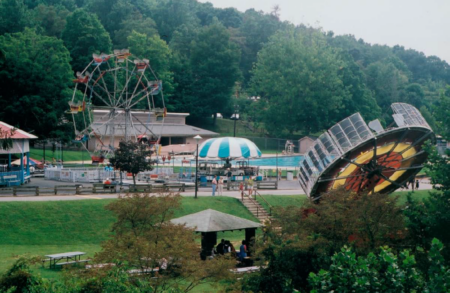 During most of the previous century, the park offered unique recreation experiences for area residents and played a role in Asheville’s historical challenges of desegregation. Built in 1925, Mama T’s is the final remnant of the park’s original vision; Lake Craig exists as a “dry lake” to improve flood capacity of John B. Lewis Soccer Complex and mitigate upstream impacts from the Swannanoa River. The circa 1930 merry-go-round shelter was removed in 2021 after significant damage resulting from a motor vehicle collision.
During most of the previous century, the park offered unique recreation experiences for area residents and played a role in Asheville’s historical challenges of desegregation. Built in 1925, Mama T’s is the final remnant of the park’s original vision; Lake Craig exists as a “dry lake” to improve flood capacity of John B. Lewis Soccer Complex and mitigate upstream impacts from the Swannanoa River. The circa 1930 merry-go-round shelter was removed in 2021 after significant damage resulting from a motor vehicle collision.
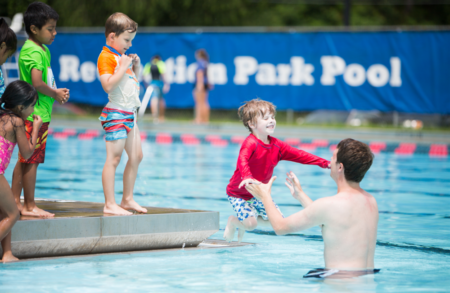 The concession stand, ticket office, and picnic shelters constructed in the 1960s offer a glimpse to Recreation Park’s heyday and the swimming pool remains a popular amenity during summer months. The 1924 bridge is one of less than 10 concrete bridges built in the 1920s remaining in Buncombe County, though the bridge deck was replaced and abutments repaired in 1986.
The concession stand, ticket office, and picnic shelters constructed in the 1960s offer a glimpse to Recreation Park’s heyday and the swimming pool remains a popular amenity during summer months. The 1924 bridge is one of less than 10 concrete bridges built in the 1920s remaining in Buncombe County, though the bridge deck was replaced and abutments repaired in 1986.
In addition to fishing access along the river, a playground sits on the former site of a wading pool. WNC Nature Center, under the direction of the Department of Community and Regional Entertainment Facilities, recently broke ground on its Gateway to the Southern Appalachians project featuring a long-awaited butterfly garden, renovated barn and farmyard space, native gardens, and expanded gift shop and member services office.
No stranger to evolution in its more than 100 years, Recreation Park may see significant enhancements and modifications soon. APR is developing a strategic plan for Recreation Park, John B. Lewis Soccer Complex, and Azalea Park to best determine how these connected spaces can be maximized to serve the community.
Do you have photos or stories to share about Recreation Park? Please send them to cbubenik@ashevillenc.gov so APR can be inspired by the past as we plan our future.
Photo and Image Credits
- Colorized and textured postcard from Asheville Postcard Company of Recreation Park shows flower gardens, Ferris wheel, carousel, and swimming pool with the zoo in the background dating from sometime between 1930 and 1945. The barn is topped with a large sign announcing the park as “Asheville’s Playground.” Courtesy of Buncombe County Special Collections, Pack Memorial Public Library, Asheville, North Carolina.
- Circa 1927 aerial view of Lake Craig and Recreation Park. The boat house and pavilion are located on the left side of the park with the zoo on the upper terrace of the property and woods where much of WNC Nature Center now sits. The pool, bathhouse, gardens, and merry-go-round pavilion are located in the center. Gashes Creek Road opened in 1927 to link Fairview and Swannanoa River roads as a detour around Biltmore Avenue. Today, a metal truss bridge crosses the Swannanoa River near the pavilion to link Recreation Park with John B. Lewis Soccer Complex. Back of photo is stamped “Photographed by A.-B. Photo Service Asheville N.C.” which was George Masa’s business name during 1927. Courtesy of Buncombe County Special Collections, Pack Memorial Public Library, Asheville, North Carolina.
- Flood waters race through the spillways of Lake Craig Dam under the Gashes Creek bridge. The power house to the right is surrounded by water. An article from the August 14, 1940 edition of The Asheville Times titled “Erratic Swannanoa Goes on Sudden Rampage” includes pictures that were likely taken at the same time, dating the photo to the previous day. Donated by Anita Hall Danigelis. Courtesy of Buncombe County Special Collections, Pack Memorial Public Library, Asheville, North Carolina.
- An article from the July 30, 1932 edition of The Asheville Times announces the opening of another Recreation Park located in the historically Black community of Shiloh. A few more articles were published after its opening with no further mentions in the publication.
- A local Kiwanis Club installed a miniature train in 1954 and replaced it with a larger train in 1956 that could handle passengers. Photo from 1958 courtesy of Kipp Teague via from Flickr.
- A notable feature of Recreation Park’s pool was a diving platform on the deeper end. Courtesy of Buncombe County Special Collections, Pack Memorial Public Library, Asheville, North Carolina.
- Kids ride boats on Labor Day weekend in 2000. Courtesy of Buncombe County Special Collections, Pack Memorial Public Library, Asheville, North Carolina.
- Twist ‘n’ Shout roller coaster on Labor Day weekend in 2000. Courtesy of Buncombe County Special Collections, Pack Memorial Public Library, Asheville, North Carolina.
- Recreation Park from Gashes Creek Bridge on Labor Day weekend in 2000. Courtesy of Buncombe County Special Collections, Pack Memorial Public Library, Asheville, North Carolina.
- While the large swimming pool remains a big draw each summer, Recreation Park also features a playground, access to fishing on the Swannanoa River, basketball courts, walking trails, and outdoor programs.
